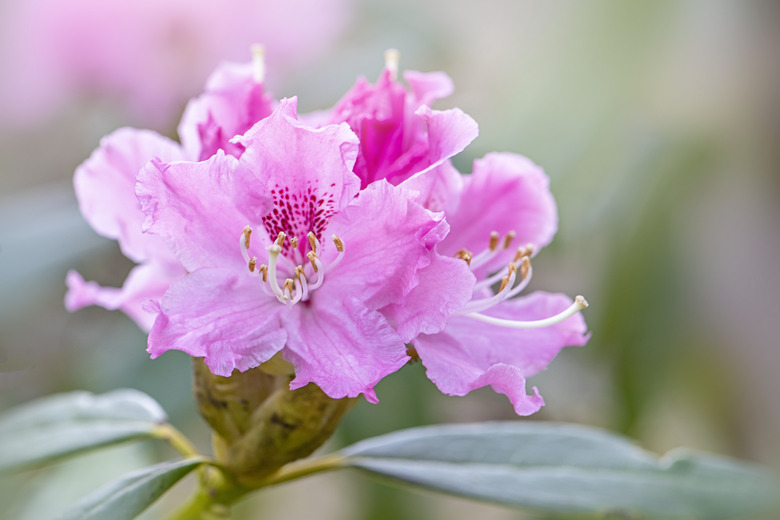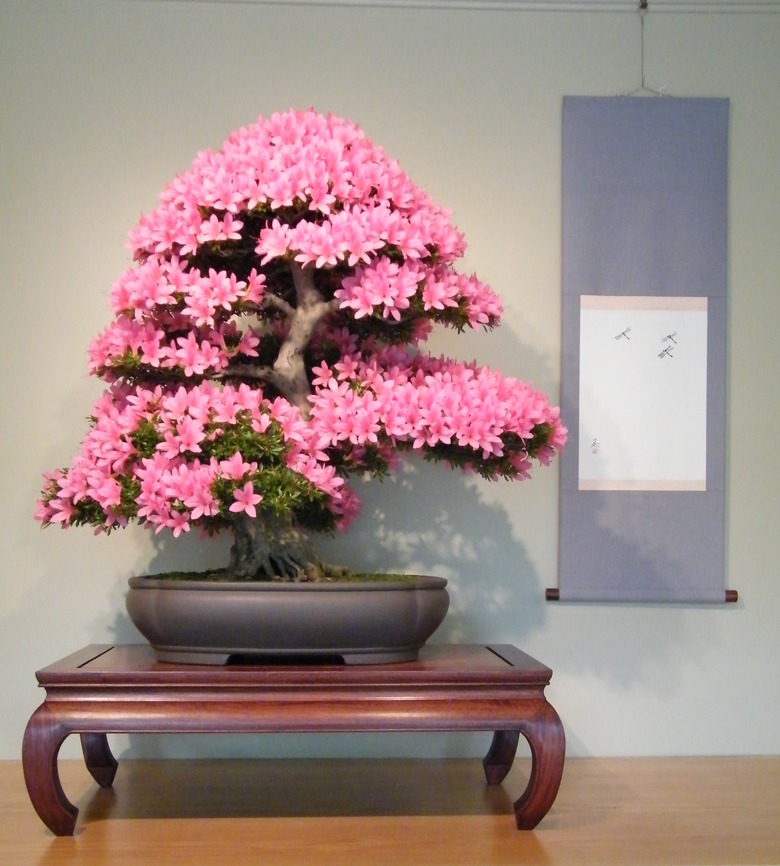How To Care For A Braided Azalea Tree
Braided azaleas (Rhododendron spp., USDA plant hardiness zones 4a to 8b) are not a natural phenomenon. They're created in nurseries where their blooming is usually timed for indoor color around the winter holidays. Creating your own tree with intertwining stems is not a difficult task.
About Azalea Trees
Masses of white, pink, red and purple funnel-shaped spring flowers bloom on azalea trees. The Rhododendron genus contains more than 1,000 species of plants that can be deciduous or evergreen, although most azaleas are deciduous.
Azaleas are technically shrubs, but they take on a tree-like appearance when the stems are braided and the branches are trained. The blooms are mildly fragrant, and greenhouse growers can manipulate growing conditions so that the braided azalea you buy at a nursery may bloom at specific times of the year.
Satsuki azaleas (Rhododendron indicum) have been grown for centuries as bonsai. Bonsai expert Melvin Goldstein, writing at the Matthaei Botanical Gardens and Nichols Arboretum, explains that in addition to Satsuki azaleas, the bush can be grown in the style known as shohin, where the tree cannot be more than eight inches tall. Braided azalea is considered a form of bonsai.
Creating an Azalea Topiary
Braided azaleas are readily available at nurseries, but creating your own requires only a little skill and a lot of patience:
- Buy a plant that's about 14 to 18 inches tall.
- Choose three stems that are close together and
about the same height. Use sharp scissors or pruners to cut all the other stems off at their bases.
- Then cut off any branches, shoots or leaves on the
remaining three stems about two-thirds of the way to the top.
- Starting at the base, carefully braid the stems
up to the leaves you left near the top. If the braided stems won't hold their shape, use gardening twine or a twist tie to hold them loosely together.
- After about a month, you should be able to remove the twine, and the braid will stay in place. Prune any new growth that appears on the
stems.
In time, the top of the plant will become bushy, and—given the right care—it will bloom.
Weeping fig (Ficus benjamina), hibiscus (Hibiscus spp.) and Dracaena (Dracaena spp.) are also good candidates for braiding.
Warning
All parts of the azalea are poisonous to humans and animals, according to the North Carolina Extension Gardener Plant Toolbox. Ingesting the bark, flowers, leaves, roots, seeds or stems causes symptoms ranging from nausea, vomiting and diarrhea to paralysis, cardiac failure and coma.
Caring for Braided Azaleas
A braided azalea tree requires care related to light, water and fertilization, along with attention from the owner to manipulate the bloom time.
Light and Water
Light and water are critical to an azalea's well-being. The plants like a bright, sunny location when they're not blooming. Direct sunlight can burn the flowers, so when the plant is blooming, move it out of the sun.
Don't allow the azalea to wilt from underwatering because it will shorten the blooming time. Conversely, don't let the plant sit in water. Use a pot with a drainage dish and keep the soil moist but not soggy.
Fertilization
Braided azaleas shouldn't be fertilized when they're in bloom. Use a liquid fertilizer recommended for azaleas sparingly at other times of the year.
Continue to prune shoots from the stems of the braided azalea as they appear and clip off dead flowers. Pinch back new growth at the top of the plant occasionally to encourage the plant to grow a bushier head.
Prompting Blooms
Getting the plant to bloom every year can be tricky. If your climate allows it, put the bush outside in October and bring it back inside on January first.
If you have hard freezes in your region, try putting the plant in a cool spot indoors for a few months. It should bloom in a couple of months.
Even if you're not successful at tricking the braided azalea into blooming again, don't throw it away. You'll still have an attractive indoor tree.

